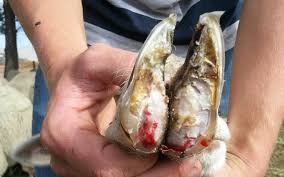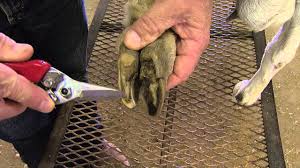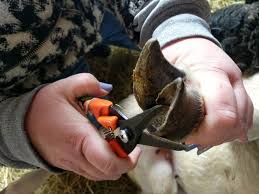Keeping hooves short and in good condition is very important because a lame goat will lose condition. Where animals travel across hard or stony ground, their hooves tend to wear and require no trimming.
Hoof trimming is an essential part of sheep and goat management. Flocks should be checked on a regular basis for hoof growth. Overgrown hooves may make walking painful, predispose the animal to other foot and leg problems, and make competing for feed difficult.
Read Also: Home-made Catfish Feed Vs Bagged Feed, Find out the Best

This may cause sheep and goats to stop eating and exercising. Animals with overgrown hooves are also very susceptible to joint and tendon problems and arthritis. Additionally, breeding animals use their hind legs during mating; the mating and reproductive performance of a flock may be seriously affected if the hooves of breeding males are not trimmed.
Read Also: The Best Fish Feeds for Catfish and Formulation Guide
Hoof Trimming Procedure

Hooves are trimmed with a sharp knife or foot clippers as follows:
Restrain the goat in either a sitting or standing position.
Take one leg and clean the soil and any loose material from under and between the hoof.
Clip or slice away the excess nail on the outside of the hoof until it is the same height as the inside. Cut thin slices until confident enough to avoid cutting the soft tissue, as this may cause bleeding and discomfort to the goat.
The heel should also be trimmed to the same height.
If the hoof is very long, it will not be possible to trim it to an ideal shape in one trimming session. Where the hoof is peeling away at the side, remove any loose materials but do not clip up the side to expose the soft tissue. After trimming, treat the feet with either iodine, antibiotic spray, a 10% solution of formalin, or copper sulphate.
Do you have any questions, suggestions, or contributions? If so, please feel free to use the comment box below to share your thoughts. We also encourage you to kindly share this information with others who might benefit from it. Since we can’t reach everyone at once, we truly appreciate your help in spreading the word. Thank you so much for your support and for sharing!
Read Also: Measurement and Definition of the term water yield

